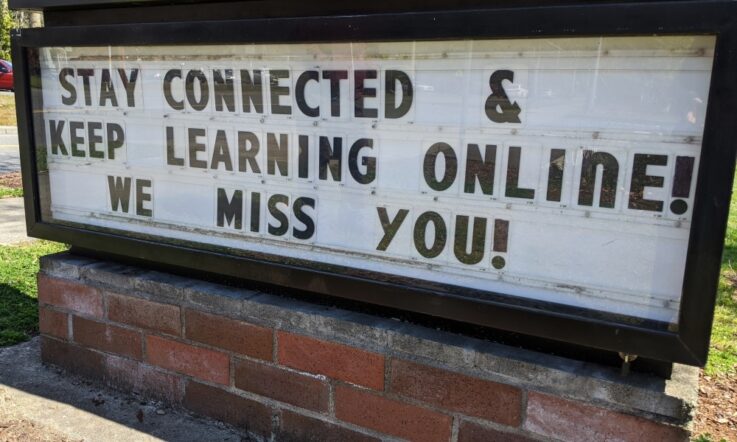Many of you will have heard of Employee Assistance Programs (EAPs) – work-based programs designed to provide proactive support to staff through counselling and wellbeing services. Maybe you heard about your own school’s EAP through a staff induction, or briefly at staff meetings. But how aware are you of what your own EAP provider can offer, and how do you know if you’re getting the most out of it?
In this Q&A, Margaret Horton, Senior Vice Principal at Methodist Ladies College (MLC), shares how the school has developed a culture of wellbeing which has raised EAP utilisation rates well above the industry standard.
Can you tell us a bit about MLC?
MLC is a leading independent girls’ school located in the heart of Melbourne. Currently, we employ over 820 staff and teach over 2000 students from all over Australia and the world who attend as day students or reside in our boarding facilities.
Our values ‘engage with respect’, ‘aspire with responsibility’, ‘act with compassion’ and ‘explore with courage’ are the articulation of what we stand for and aspire to, guiding the culture we foster and the behaviours we expect of everyone within our community.
Can you tell us about MLC’s approach to teacher wellbeing and development? What services are provided for teachers, and how are staff made aware of these options? Are staff given the opportunity to provide feedback on what services they would find useful?
We recognise that teacher wellbeing is just as important inside and outside the classroom as it is for students. This is why we are committed to putting the same effort into keeping our teachers healthy both physically and mentally as we do with our students.
Through staff engagement and feedback, we have developed a range of services, programs, social activities, work practices and communication channels that create a sense of belonging and positive relationships, resulting in an inclusive, caring environment with many opportunities for social connection.
We offer a wide range of programs and services such as EAP, the Unmind app (a mental health and wellbeing app), physical classes such as Pilates and many social activities. We also have designated resources such as a Head of Staff Welfare and Operations, as well as the HR function.
In addition to regularly seeking feedback from staff, we also have a cross-functional wellbeing ambassador group that supports communication through the College and provides additional input into our program and activities.
This all helps ensure that wellbeing remains a priority across the organisation and that actual 2-way dialogue is engaged.
What is involved in the wellbeing checks at MLC? How often do they occur, and who runs them? Are they for all staff?
Throughout the COVID-19 pandemic, we introduced wellbeing checks for all staff and students.
For our staff, we used the existing team structures to provide the support staff required to transition into lockdown. We agreed as a community that daily check-in was an essential part of ensuring our people did not feel isolated.
Managers instigated the daily check-ins within teams. For example, Heads of Department had a daily check-in with their teams, and the Head and Deputy Head of Junior School checked in with each of their staff.
This aligned with the student check-ins initiated within the student wellbeing program, which ensured increased individual support for students alongside the additional support of counselling services.
Why are EAPs important in school settings?
Teaching can be a challenging job. Staff will encounter stressors throughout their career, and schools must provide support systems, with EAPs being one element of a broader staff wellbeing approach, to help them manage these.
Underpinning this, however, is the importance of developing a positive, inclusive, caring, and supportive culture; ultimately, this is what ensures a ‘healthy’ workforce.
It’s important to remember that EAPs should be a proactive and preventative approach to help support wellbeing, not only for use during an issue. In our experience, when they are promoted and endorsed in this way you will have higher utilisation and, ultimately, better outcomes for your people.
At a minimum, we believe schools should include an EAP and activities and programs that increase social connection and engagement with colleagues and implement internal policies and procedures that support wellbeing. EAPs are vital but should also be only one part of the staff wellbeing approach. Social activities, supporting physical health and genuine 2-way dialogue are all important in supporting a healthy and positive workforce.
Schools are communities, and if we aim to provide healthy environments for our students, we need to support our educators' wellbeing inside and outside the classroom.
What types of issues does the school’s EAP provider cover?
We understand that stressors can be caused both inside and outside of the workplace, so it’s important for us to provide our employees with the support that’s right for them. Our provider, Access EAP, focuses on helping people be their best in life and at work.
We have also recently introduced Unmind, an app that provides access to valuable tools, training and exercises to support mental wellbeing through various expert tools rooted in neuroscience, cognitive behavioural therapy, mindfulness and positive psychology.
Alongside the Unmind app, and training and helpful resources on managing mental health and wellbeing, through the EAP staff have access to counselling sessions with qualified professionals who can help identify and address the challenges they are experiencing. This includes anything that may be happening in their personal lives.
We are proactive in our approach, including keeping our wellbeing programs top of mind through Staff Daily newsletters, the Principal’s weekly newsletter, on the intranet and through our dedicated wellbeing staff ambassadors who advocate for the services on offer.
The EAP utilisation rate for MLC staff is 4% – over double that of the industry average (1.8%). What has led to these higher utilisation rates, and what has been the impact of EAP access for staff?
We are committed to ensuring our staff’s wellbeing is at the forefront so that they can enjoy what they do each day and provide the very best learning environment for their students.
We have worked hard to build a positive environment where teachers are aware of all the types of support available to them, ensuring they feel confident and comfortable enough to reach out and make use of what we have to offer.
We are proud to have a culture that empowers and supports our staff to be the very best they can be.
Staff reflection:
As a school leader, are your staff aware of the wellbeing services available to them through the school? Do they know what kinds of services are covered by the school’s EAP provider? In your next staff meeting, discuss how you can ease access to these services for all.



